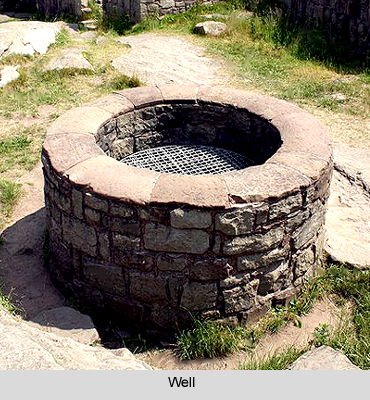 Most of the buildings are accompanied by several smaller units that are required for daily usages. For such structures Vastu Shastra states certain rules. For instance, the location where these would be constructed or the materials to be used are mentioned in the ancient architecture. For the construction of wells, borings and underground water storage tanks the following rules should be observed.
Most of the buildings are accompanied by several smaller units that are required for daily usages. For such structures Vastu Shastra states certain rules. For instance, the location where these would be constructed or the materials to be used are mentioned in the ancient architecture. For the construction of wells, borings and underground water storage tanks the following rules should be observed.
•The best place for digging the well is the north-east corner of the plot. This will result the increase in wealth, prosperity, knowledge.
•While digging the well an axis from the north-east corner to the south-west corner should be drawn. It should be seen that the well does not intersect with the axis. The well needs to be dug to the right or to the left of the axis.
•It is most beneficial if a well is dug in the east side of the north-east corner of the plot. There will be an increase in wealth as well as prosperity.
•If the well is dug to the north side of the north-east corner there will be an increase in wealth but reputation increases marginally.
•The well should be in the north-east corner. It should be dug less than half way to the east and the north sides. It should not be constructed in the south-east or the north-west corners.
•A well in the east direction leads to prosperity, in the north results in increase in wealth, in the west one has to face many difficulties and hardships. When dug in the south it will lead to untimely deaths, deformities, frequent accidents and suicide attempts.
•Unnecessary enmity and theft will result if the well in the plot is in the northwest corner it leads to.
•Never built a well in the south-west corner of the plot. Vastu Shastra considers it inauspicious as it may result in the untimely death of the head of the family. Violence increases; there will be a total failure in the jobs undertaken; loss of wealth, suicide, clashes in the family and other problems will arise. These troubles are adequate to make life miserable.
•If a well is constructed in the south-east corner it may prove to be perilous for children. Fire and water are two opposite elements and when they come together, clashes and troubles are infused in one`s life. additional troubles include loss of wealth and serious strife at home. Compared to men women will suffer more losses.
•If there is a well at the centre of the plot or building it will definitely ruin the family. The central position is accredited to Brahma and hence no construction can be done here. As a result nobody can stay in such places for a long time and life becomes unstable.
•The well should be dug only after the land has been worshipped. Before digging the well, the place should be clearly demarcated. If the well is dug when the stars are favourable the water is easily obtained at a low level and it will also taste good.
•For digging a well, the favourable constellations are Rohini, Uttra, Hasta, Uttara Bhadrapada etc.
•It is advisable that the digging starts on Monday, Wednesday, Thursday or Friday as these are considered auspicious days.
•Digging the well should not be started, as far as possible, on the zero day, {Kshya day) or Vridhi tithi.
•Moreover when the constellations are facing downwards digging can be started. Amongst the downward facing constellations, Bharani, Purva, Krutika, Purvashadha, Purva Bhadrapada, Mula and Ashlesha are favorable for constructing a well.
The aforementioned rules are applicable not only to residential buildings but also to business establishments, hospitals, temples and others.




















